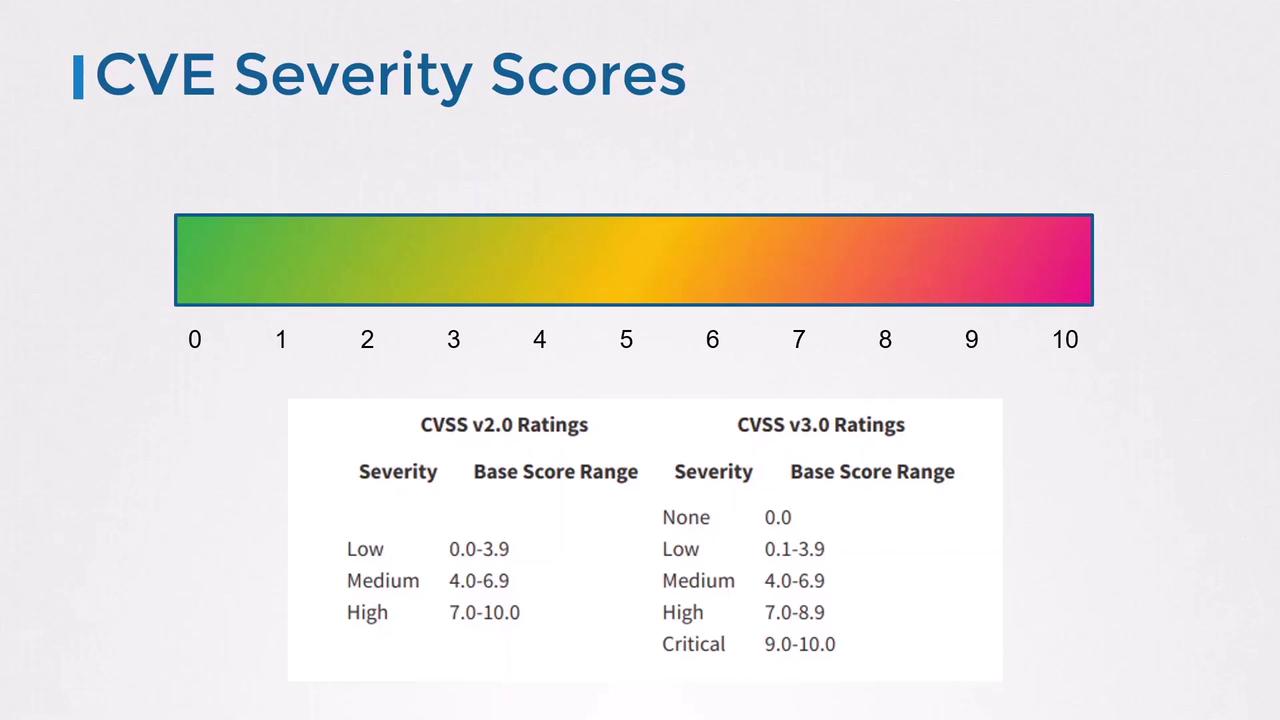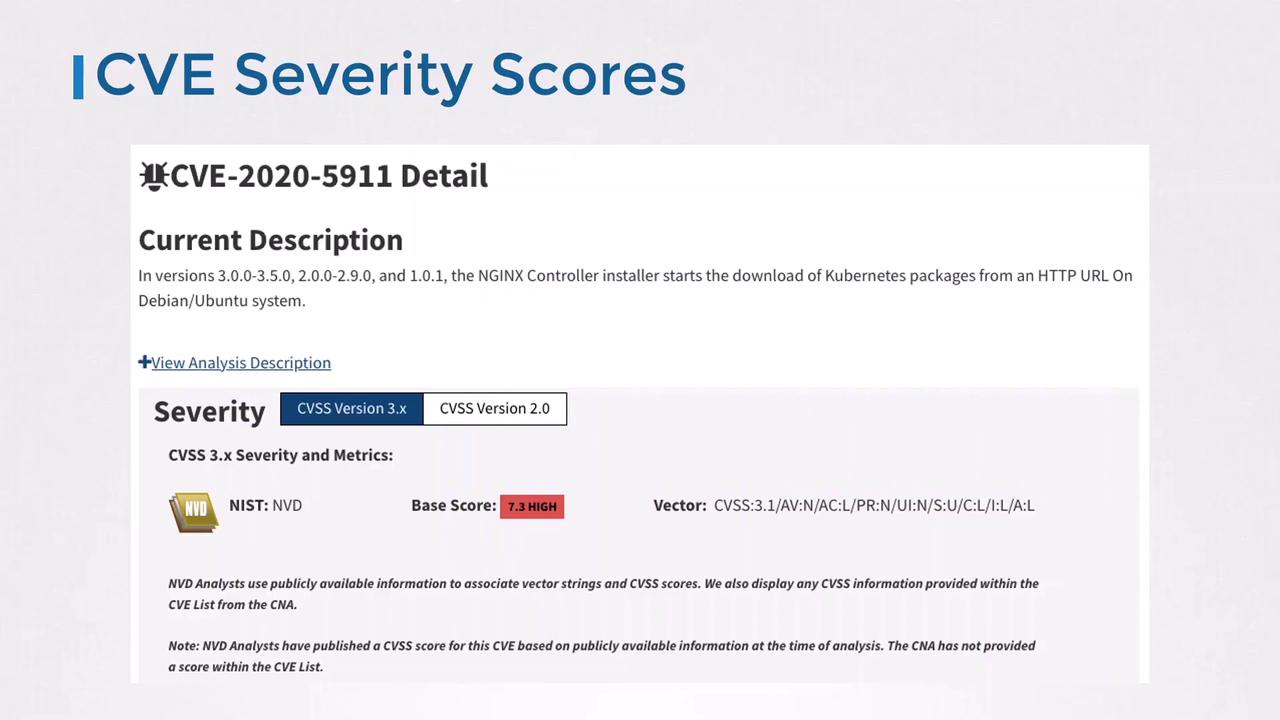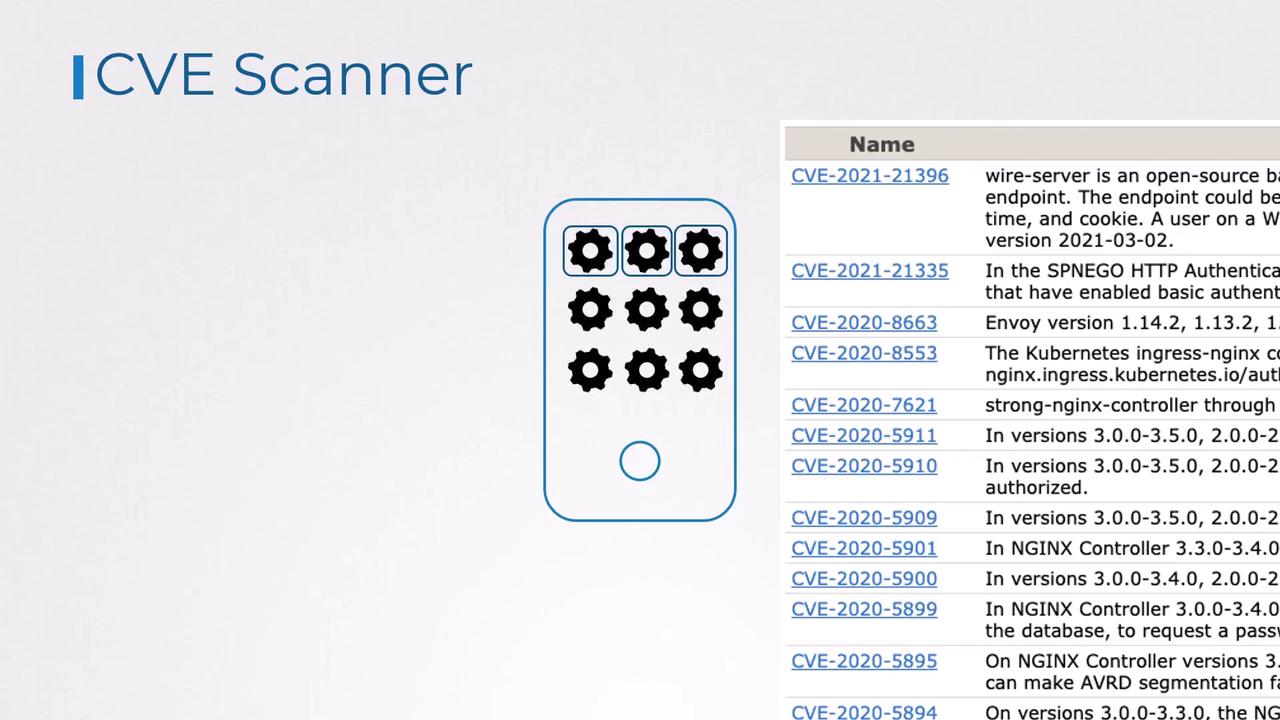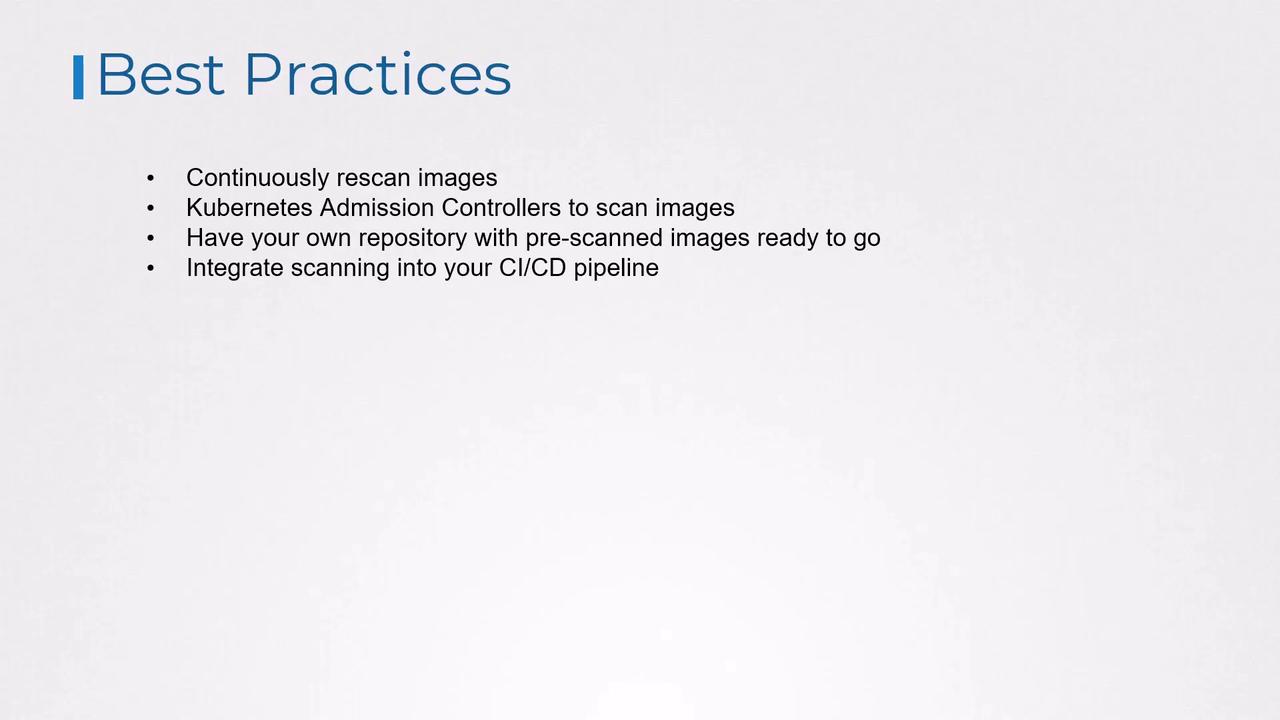Kubernetes and Cloud Native Security Associate (KCSA)
Platform Security
Supply Chain Security Scan images for known vulnerabilities
Container image scanning is a critical step in supply-chain security. In this guide, you’ll learn about CVEs, CVSS ratings, and how to use Trivy to automatically detect and remediate known vulnerabilities in your container images.
What Is a CVE?
Common Vulnerabilities and Exposures (CVE) is the industry-standard database for public security flaws. Each vulnerability gets a unique identifier, helping you avoid duplicates and streamline research.
Note
Visit the CVE Database to search for published vulnerabilities and track remediation status.

Typical CVE categories include:
- Unauthorized access bypasses (e.g., confidential data exposure)
- Denial-of-service or performance degradation bugs
Understanding CVSS Severity Ratings
The Common Vulnerability Scoring System (CVSS) provides both a numeric score (0–10) and a qualitative severity label. Use the table below to interpret scores:
| Severity | CVSS Score Range |
|---|---|
| None | 0.0 |
| Low | 0.1 – 3.9 |
| Medium | 4.0 – 6.9 |
| High | 7.0 – 8.9 |
| Critical | 9.0 – 10.0 |

Example: CVE-2020-5911
CVE-2020-5911 affects the NGINX Ingress Controller installer on Debian/Ubuntu by downloading packages over HTTP instead of HTTPS. Its CVSS base score is 7.3 (High), indicating a serious risk.

Why Scan Container Images?
Containers often bundle multiple libraries and OS packages, each a potential vector for attacks. Automated scanners help you:
- Identify and upgrade vulnerable packages
- Apply patches or workarounds
- Remove unused components to reduce risk

Container Vulnerability Scanner: Trivy
Trivy by Aqua Security is a fast, user-friendly scanner that integrates easily into Docker workflows and CI/CD pipelines.
Installing Trivy on Debian/Ubuntu
sudo apt-get update
sudo apt-get install -y wget apt-transport-https gnupg lsb-release
wget -qO - https://aquasecurity.github.io/trivy-repo/deb/public.key | sudo apt-key add -
echo "deb https://aquasecurity.github.io/trivy-repo/deb $(lsb_release -sc) main" \
| sudo tee /etc/apt/sources.list.d/trivy.list
sudo apt-get update
sudo apt-get install -y trivy
Running a Basic Scan
trivy image nginx:1.18.0
2021-03-21T02:54:18.240Z INFO Detecting Debian vulnerabilities...
2021-03-21T02:54:18.295Z INFO Trivy skips scanning programming language libraries because no supported file was detected
nginx:1.18.0 (debian 10.8)
Total: 155 (UNKNOWN: 0, LOW: 110, MEDIUM: 9, HIGH: 33, CRITICAL: 3)
LIBRARY VULNERABILITY ID SEVERITY INSTALLED VERSION FIXED VERSION TITLE
-------------------------------------------------------------------------------------------------------
apt CVE-2011-3374 LOW 1.8.2.2 Incorrect handling in apt-key
bash CVE-2019-18276 MEDIUM 5.0-4 When effective UID != real UID
coreutils CVE-2016-2781 MEDIUM 8.30-3 Session escape in chroot
curl CVE-2020-8169 HIGH 7.64.0-4+deb10u1 libcurl: partial password leak
...
Filtering and Advanced Options
# Only CRITICAL and HIGH
trivy image --severity CRITICAL,HIGH nginx:1.18.0
# Skip vulnerabilities without available fixes
trivy image --ignore-unfixed nginx:1.18.0
# Scan a saved tar archive
docker save nginx:1.18.0 > nginx.tar
trivy image --input nginx.tar
Warning
Using --ignore-unfixed can hide critical risks if no patch is available. Always review the full report before deployment.
Reduce Your Image’s Attack Surface
Smaller base images generally contain fewer vulnerabilities. Compare these scan results:
| Image | Total CVEs |
|---|---|
| nginx:1.18.0 (debian) | 155 |
| nginx:1.18.0-alpine | 0 |
Always prefer minimal, official base images.

Image Scanning Best Practices
- Continuously re-scan images to catch newly disclosed CVEs
- Enforce admission controls to block or quarantine unscanned or unsafe images
- Maintain an internal registry of pre-scanned, approved images for rapid rollouts
- Integrate scanning into CI/CD pipelines so that every build is audited at source
Links and References
Watch Video
Watch video content